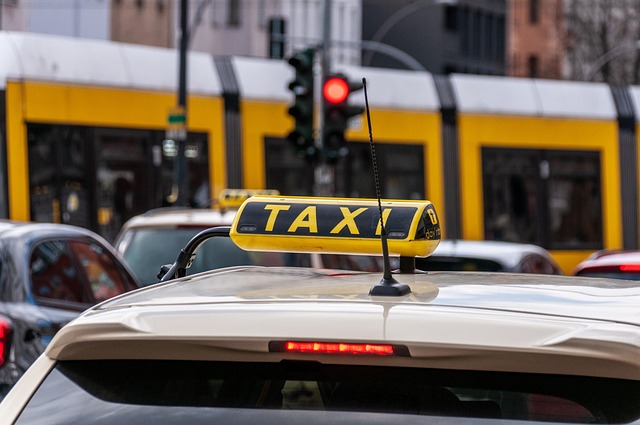Looking to register your car in California? This guide walks you through the essential steps, from understanding key requirements to completing the registration process. First, grasp California’s car registration mandates, especially the crucial role of Vehicle Identification Number (VIN) verification. Next, gather necessary documents and perform a VIN check at an approved location. Choose your preferred registration site, then fill out and submit the application. Ensure everything is in order for a smooth registration experience.
- Understand California Car Registration Requirements
- Gather Necessary Documents for VIN Verification
- Perform Vehicle Identification Number (VIN) Check
- Choose an Approved Registration Location
- Complete and Submit the Registration Application
Understand California Car Registration Requirements

Before registering your car in California, it’s crucial to understand the state’s specific requirements for vehicle registration and documentation. One key aspect is ensuring that your car’s Vehicle Identification Number (VIN) is properly verified. This process, often referred to as a VIN inspection or verification, plays a vital role in establishing ownership and the vehicle’s history. In California, this typically involves checking the vehicle’s title, inspection report, and confirming the VIN accuracy with state records.
For convenience, many residents opt for a mobile VIN inspection service, allowing them to complete the verification process from the comfort of their homes. These services utilize specialized equipment to perform a thorough check, ensuring that your car meets all necessary standards. By utilizing a mobile vin verifier, you streamline the registration process and avoid potential delays or complications associated with incorrect or missing information.
Gather Necessary Documents for VIN Verification

Before you start the registration process, it’s crucial to gather all necessary documents for VIN (Vehicle Identification Number) verification. This step is a critical part of ensuring your car’s history is accurately represented and can help prevent fraud or theft. You’ll need to provide proof of ownership, typically in the form of a title or bill of sale, along with a valid driver’s license or state ID. Additionally, have your vehicle’s VIN readily available—you may be asked to enter it during the verification process.
For a streamlined experience, consider utilizing a mobile vin inspection or mobile vin verifier service. These services offer convenient, on-demand VIN verifications, often right at your location. This can save you time and effort compared to traditional methods, especially if you’re registering a vehicle that’s been recently purchased or imported.
Perform Vehicle Identification Number (VIN) Check

Before registering your car in California, performing a Vehicle Identification Number (VIN) check is an essential step. This verification process ensures that the vehicle matches the details listed on the registration documents and helps prevent fraud. It’s a simple yet crucial step that can be done easily through a mobile VIN verifier or by scheduling a mobile VIN inspection.
Using a mobile vin verifier or conducting a vin inspection allows you to cross-reference the unique VIN with state records, ensuring its authenticity. This is particularly important when purchasing a used car, as it helps you avoid potential scams and ensures you’re making an informed decision. By doing so, you’ll have peace of mind knowing that your vehicle’s history is transparent and accurate.
Choose an Approved Registration Location

When registering your car in California, it’s crucial to choose an approved registration location, which can be a California Department of Motor Vehicles (DMV) office or certain authorized service centers. These locations are equipped to handle all necessary paperwork and ensure compliance with state regulations. One key step before visiting these centers is conducting a vin verification using a mobile vin verifier or performing a mobile vin inspection to confirm your vehicle’s authenticity and history, which plays a vital role in the registration process.
Authorized service centers often offer added convenience through comprehensive services, including issuing plates, conducting inspections, and accepting various payment methods. They are particularly useful for individuals with busy schedules, as they streamline the registration process, saving you time and effort compared to visiting a traditional DMV office. This efficiency is especially beneficial when you need to register a vehicle quickly or have multiple vehicles to register simultaneously.
Complete and Submit the Registration Application

To begin registering your car in California, you’ll need to complete and submit the Registration Application. This form requires detailed information about your vehicle, including its make, model, year, and unique Vehicle Identification Number (VIN). Accurately entering this data is crucial for a smooth registration process, as it facilitates the necessary VIN verification.
During the application process, you can opt for a traditional in-person submission at a California Department of Motor Vehicles (DMV) office or choose a more convenient approach with a mobile vin inspection. Utilize a trusted mobile vin verifier to have your vehicle’s VIN checked remotely, ensuring its validity and accuracy before finalizing your registration.
Registering a car in California involves understanding key requirements, gathering essential documents, and completing a VIN verification process. By following these steps, from identifying your vehicle’s unique Vehicle Identification Number (VIN) to choosing an approved registration location and submitting the application, you’ll be on your way to securing your vehicle’s official registration. Remember, accurate and timely car registration ensures your vehicle complies with California laws and allows for smooth operation on state roads.
